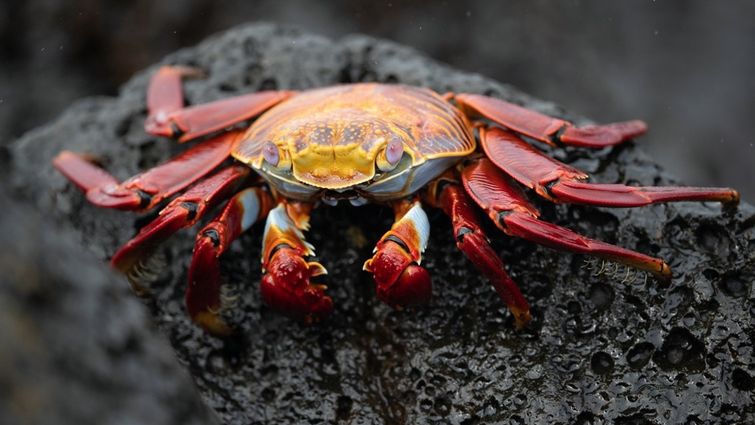

A new published study by researchers at Loma Linda University School of Medicine, in collaboration with the Origins Museum of Nature and Galápagos National Park, reveals that Grapsus grapsus crabs in the Galápagos Islands could pose potential health concerns if consumed due to their surprisingly high mercury level content.
The study, led by George D. Jackson, PhD, professor of Earth and Biological Sciences, aimed to explore mercury levels in crabs and other marine intertidal invertebrates in the Galápagos archipelago to assess the potential health risks and understand how natural sources and potential human activities contribute to mercury contamination.
“Our analysis of mercury levels in the crabs has uncovered some significant results,” said Dr. George Jackson. “While high mercury concentrations were found at various sites, the elevated levels can be concerning given that they exceed consumption recommendations.”
The researchers examined five sites on four islands in the Galápagos archipelago. Although no major industry contributes to mercury sources, some pollution could result from the populated regions. Researchers took samples from populated regions and uninhabited sites in order to assess potential anthropogenic, or human-related, sources of mercury.
Mercury levels discovered in some crabs exceeded safe consumption limits of seafood set by United States and European Union agencies, which are 0.3 mg/kg and 0.5 mg/kg, respectively.
The highest mercury levels were found at San Cristóbal’s town harbor and the isolated island of South Plaza, with average concentrations up to 0.51 mg/kg — comparable to levels found in fish widely accepted as unsafe to consume due to their mercury levels, such as marlin and orange roughy. In contrast, the most isolated island of Isabela had relatively low levels of mercury, with mean concentrations around 0.06 mg/kg.
The discovery of high mercury levels in such a pristine environment suggests that mercury contamination can occur even without major human activities. Studying mercury levels in the remote Galápagos Islands helps researchers understand the baseline levels of contamination without direct industrial impact.
While the researchers believe the detected mercury levels could be influenced by natural sources like volcanism, the significant variability in levels across different sites indicates that other unidentified sources may also be contributing to the mercury contamination. Some of the crab mercury levels were the same levels as fish that are recommended to be avoided. Identifying these sources is important because mercury is particularly dangerous to consume due to its toxicity and should be avoided, especially affecting pregnant women, those who might want to become pregnant, and young children according to the U.S. Food and Drug Administration.
“We are planning a second expedition that will focus on expanding the study with greater numbers of crabs and sampling other islands,” added Jackson.
The researchers also want to study mercury levels in crab predators and in spiny lobsters in the Galápagos archipelago.
Learn more about the Department of Earth and Biological Sciences.





